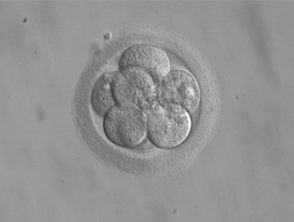by Sondra Turjeman, with Idan Segev, Oren Amsalem, Eyal Gal and colleagues, Edmond and Lily Safra Center for Brain Sciences
Brains do amazing things – they (we) create, think, feel, interact with others, and also get sick with severe diseases. Yet how brains do this variety of things remains largely a mystery. One major tool for tackling this mystery is sophisticated electrophysiological and opto-genetical experiments, whereby the electrical activity in the brain is recorded from a handful of neurons during a particular behavioral task. While the participation or contribution of single neurons in this network activity could be deduced from such experiments, these recordings provide just a glimpse into the complexity of the active network. Furthermore, the biophysical underpinnings that give rise to the emergent network dynamics in the brain remain mostly “hidden” in such experiments. Indeed, we lack a systematic tool to explain how the microscopic cellular and synaptic connectivity properties give rise to the macroscopic, network level activity, and this is a significant obstacle in understanding “how the brain works”.
With this hindrance in mind, researchers at the École Polytechnique Fédérale de Lausanne, in collaboration with the Prof. Segev’s lab at the Hebrew University of Jerusalem, developed the Blue Brain Project (BBP) in the last decade or so. This project suggests that a fine-scale, biologically-faithful (“dense”) digital reconstruction of brain networks could serve as the missing experimental link between the low biophysical level and the high network levels. Such 3D digital reconstruction of a whole neuronal circuit should accurately represent the biological tissue in terms of number, type, and connectivity among the neurons, as well as the physiological properties of the neurons and the synapses that connect them. In 2015 the BBP succeeded, for the first time, in faithfully reconstructing such a circuit from rodent neocortices. The 1/3 mm3 tissue consists of ~36 million synapses and ~30,000 cells. Each cell is composed of ~500 different electrical compartments; to compute the voltage in a compartment requires solving >10 differential equation. This means solving some 100 million differential equations for each time step of a circuit simulation.
With this digital tool in hand, researchers can (1) examine the topological (graph-theoretical) rules governing large-scale 3-D connectivity and (2) reconstruct, and consequently, provide a set of new explanations for, the results of previous biological experiments. Indeed, Blue Brain simulations have uncovered various network structures governing the architecture of the cortex – from the existence of individual, highly-connected hub neurons to the network-wide, “small-world” organization reflecting efficient connectivity among all neurons in the microcircuit (analogous to the small-world phenomenon in social networks, popularly known as six degrees of separation; Gal et al., 2017). Furthermore, simulations have also explained anew the phenomenon of “auditory surprise” whereby the response of the auditory cortex to a repeated tone diminishes with time whereas the response to a novel tone remains strong (Amsalem et al., 2020).
More specifically, at Segev’s Lab for Understanding Neurons at the Hebrew University in Jerusalem, Oren Amsalem has digitally replicated a well-known experiment, first performed in the cat, showing that neurons in the auditory cortex respond more strongly to a novel sounds than to common ones (Ulanovsky et al,. 2003). Oren implemented this experiment in the virtual neocortex studying 31,346 cells exposed to different tones (common and rare) over 150 biological seconds. Data were collected at a resolution of 10,000 Hz, and for some simulated experiments, where the voltage response in all cells was needed, he generated over 2.25*1013 datapoints or 90 terabytes of data. Not only was Oren able to replicate the experiment and results, but he could show how individual neurons are arranged and function together in a network to produce this differential response to common and novel stimuli. Once Oren deciphers the underlying mechanisms responsible for this phenomenon, he can suggest new biological experiments based on the predictions of his model.
Behind these simulated experiments there is a 4-rack IBM Blue-Gene/Q supercomputer; each simulation uses 512 nodes to generate the data and 8 terabytes of memory running for 1.5 days. From here, the goal is to expand from simulating local cortical microcircuit to model the whole rodent neocortex (10 million neurons) and then its whole brain (75 million neurons) and, then the whole human brain. This could have far-reaching implications on understanding the brain in health and disease contexts and for interpreting biological signals (such as EEG which is not yet fully understood) and for providing a solid basis for brain-inspired (AI) machines. For more information on the Blue Brain Project, visit the Blue Brain Portal.






